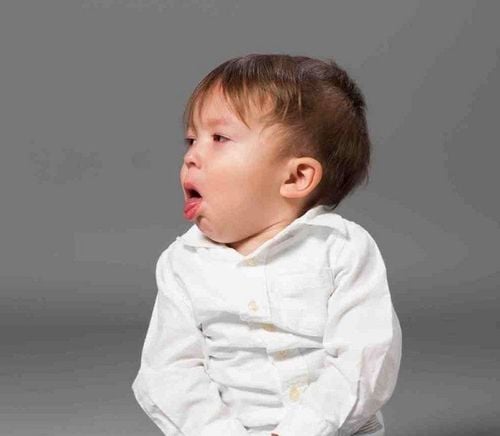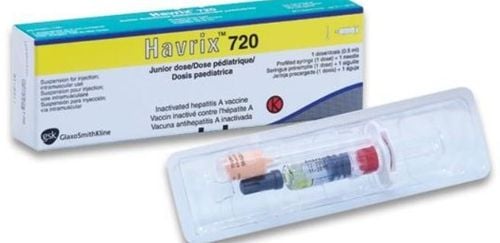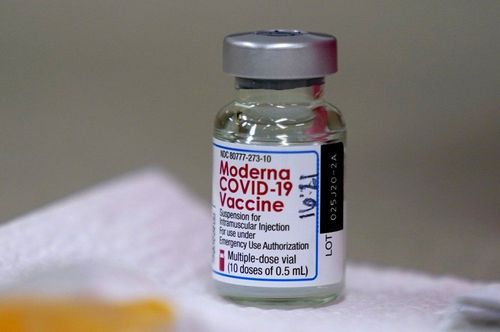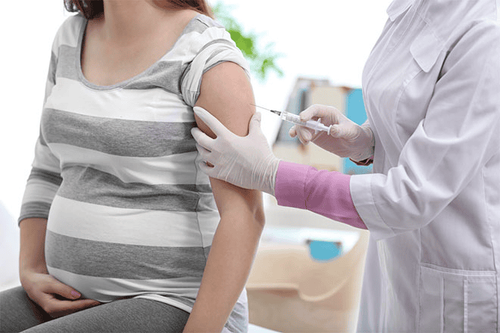This is an automatically translated article.
The article was consulted with Master, Doctor Tran Mai Phuong - Pediatrician - Department of Pediatrics - Neonatology, Vinmec Central Park International General Hospital.Whooping cough in children is an acute infectious disease that can occur at any age, but is more common in young children. The main symptom of the disease is a severe cough and difficulty breathing. Caring for a child with whooping cough.
1. Learn about whooping cough
Childhood pertussis (Pertussis) is an infectious disease caused by the pertussis bacteria (Bordetella pertussis) when the bacteria enter the body through the respiratory tract. Whooping cough is characterized by persistent coughs that last for weeks to months. The illness usually begins with symptoms of a respiratory infection such as a runny nose, sneezing, cough, or low-grade fever. After 1-2 weeks, the cough will start to get worse. Whooping cough in infants can lead to rapid death due to difficulty breathing causing respiratory failure. The disease is transmitted through the respiratory tract by children coming into direct contact with secretions from the mucous membranes of the nose and throat of an infected person when coughing or sneezing. The possibility of disease spread is high, especially for children living in the same closed space such as at home, school... Children get sick because they have not been vaccinated or have not been vaccinated against whooping cough. complete and on time. This leads to a high transmissibility, and the higher the rate of severe illness and death from pertussis, especially in infants under 6 months of age. Is pertussis in children dangerous? Whooping cough causes dangerous complications such as:Pneumonia: The most common complication. The causative agent can be B. Pertussis itself, but is most commonly caused by secondary bacteria.

Viêm phổi là biến chứng thường gặp nhất do ho gà gây ra
2. Manifestations of whooping cough
At first, children often have mild coughs, then cough more, sneeze, runny nose, low-grade fever. Paroxysmal phase: Cough is persistent, occurs spontaneously or is caused by a minor stimulus. Children have a dry cough, red face, wheezing (when breathing, there will be a hissing sound like the hiss of a chicken), vomiting a lot of sputum, thick. Especially in infants and young children with brief pauses in breathing. Between coughs, children usually feel comfortable and can resume their normal activities. In addition, during this stage, there are also some signs such as: nosebleeds, conjunctival hemorrhages or bruising around the lower eyelids. Recovery phase: The cough shortens, the number of attacks decreases. Cough can persist for several weeks.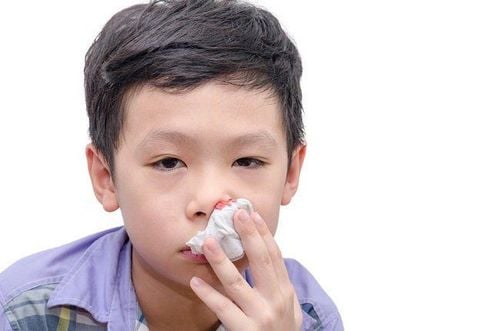
Giai đoạn kịch phát có thể xuất hiện dấu hiệu chảy máu cam ở trẻ nhỏ
3. Danger signs in children with whooping cough
Children with whooping cough have a severe prognosis when they have 1 of the following factors:Children under 6 months, especially those under 3 months of age, eating poorly, vomiting a lot Prolonged pauses in breathing Convulsions Pneumonia
4. Caring for a child with whooping cough
For children with mild case of pertussis: The number of coughs is small, the duration of each cough is short, the child still eats normally, during the cough does not turn purple, in these cases the mother can take care of it at home.Ensure the living environment to avoid irritants such as: cigarette smoke, dust, chemicals. Let the child rest, be quiet, avoid stimulation. For breastfed babies continue to breastfeed normally. With weaning children and older children: give them liquid, easy-to-digest food, eat a little at a time, divide them into many meals. Hygiene of the body, nose and mouth for children. After each cough, clean the sputum in the child's mouth, use a soft cloth to wipe the mouth with warm salt water. You can drop the baby's nose with 9 ‰ physiological saline. For older children, clean their teeth and gargle with salt water. Isolate the sick child from other children to avoid spreading the disease. Give the child medicine as prescribed by the doctor, if available. Take your child to the doctor immediately when the cough is accompanied by one of the following signs:
The child has many coughs, the cough has red or purple face, the duration of each cough lasts longer, eats poorly, vomits a lot, sleeps less, breathes quickly , shortness of breath
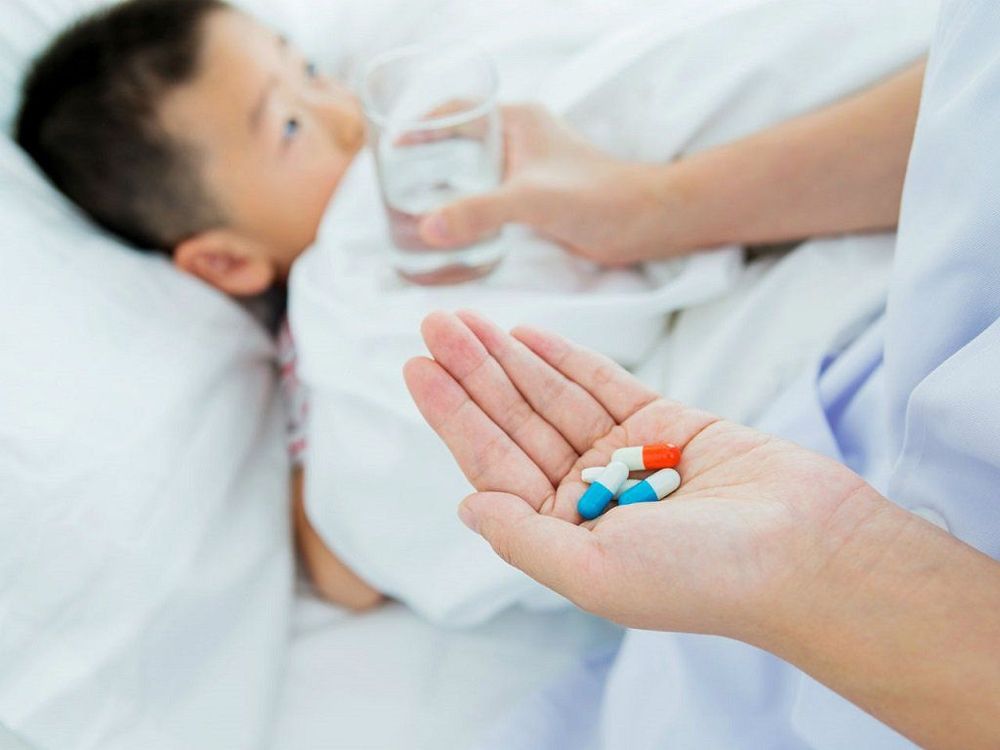
Trẻ mắc ho gà nhẹ có tự chăm sóc tại nhà theo hướng dẫn của bác sĩ
5. How to prevent pertussis for children?
Vaccination: Vaccinating children against whooping cough is the most effective prevention, up to 90%. According to the recommendations of the World Health Organization (WHO), when the baby is 2 months old, the time when the antibodies against whooping cough mother transmit to the baby begin to disappear. At that time, it is best to vaccinate children at this time because it helps children to be immune to diseases, and at the same time avoids the risk of infection outbreaks, and protects public health. To prevent pertussis, the Ministry of Health recommends that families get their children vaccinated with 3 full doses of Quinvaxem vaccine (5 in 1 vaccine) under the Expanded Immunization Program to prevent diphtheria. , whooping cough, tetanus, hepatitis B, Hemophilus influenza type B. Isolation of sick people: Keep children away from people who show signs of pertussis. Suspected cases of the disease should not come into contact with young children, especially those who have not been vaccinated. For young children and infants, if not treated promptly and properly, it can cause many dangerous complications. Therefore, you need to treat whooping cough in your child as soon as possible. For children under 6 months old, you need to take them to the hospital for monitoring and inpatient treatment at the hospital. For older children who have not had complications, you can give them specific antibiotic treatment for 10-14 days as prescribed by the doctor. You absolutely do not arbitrarily give children sedatives, cough suppressants, expectorants, ... because they can be dangerous to children. Vaccination against whooping cough is the best way to prevent children from pertussis to avoid dangerous complications of pertussis. The whooping cough vaccine is in a 5-in-1 or 6-in-1 vaccine. Mothers should note that they should give their children the right injection at the right time, with the right dose, and with enough time to get the maximum effect.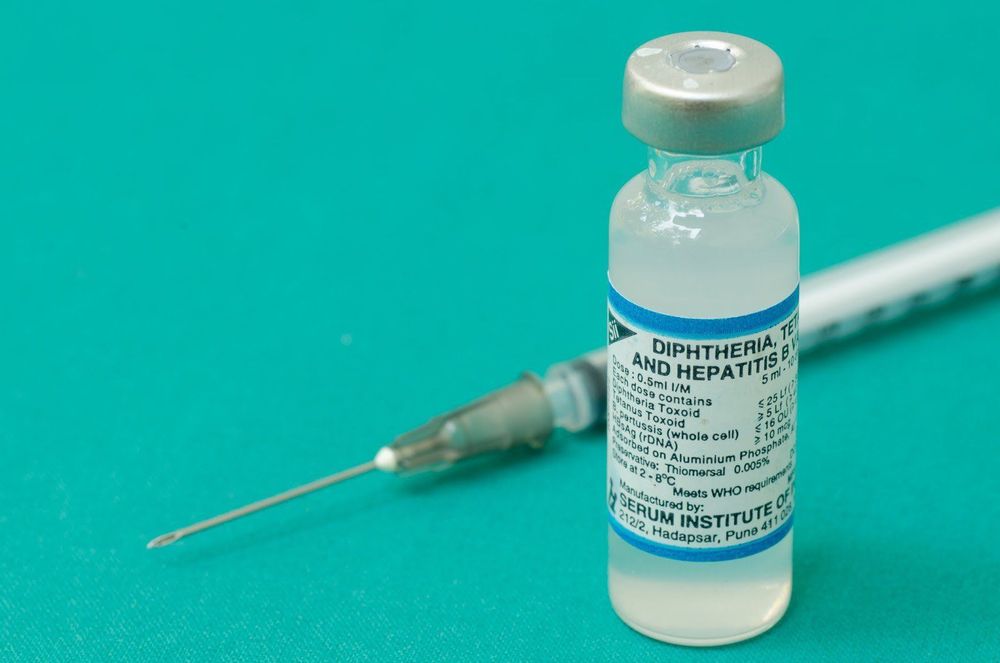
Tiêm vắc-xin ho gà là cách tốt nhất giúp trẻ tự phòng bệnh
Vinmec International General Hospital is providing a pertussis vaccination service with the following benefits:
Children are fully examined and screened for physical and health problems, and advised on Preventive vaccines and injection regimens, how to monitor and care for children after vaccination before ordering vaccination according to the latest recommendations of the Ministry of Health & World Health Organization to ensure effectiveness Best and safest for children. A team of experienced and professional pediatric doctors and nurses, understand children's psychology and apply effective pain relief methods for children during the vaccination process. 100% of vaccinated children were monitored for 30 minutes after vaccination and reassessed before leaving. Underwent general supervision before, during and after vaccination at Vinmec Health System and always have an emergency team ready to coordinate with the vaccination department. handling cases of anaphylaxis, respiratory failure - circulatory arrest, ensuring timely and correct treatment when problems occur. Vaccination room is airy, has a play area, helps children feel comfortable and good psychologically before and after vaccination. Vaccines are imported and stored in a modern cold storage system, with a cold chain that meets GSP standards, keeping vaccines in the best conditions to ensure quality. Parents will receive a reminder message before the vaccination date and their child's vaccination information will be synchronized with the national immunization information system.
Recommended video: Pertussis vaccination in infants
Please dial HOTLINE for more information or register for an appointment HERE. Download MyVinmec app to make appointments faster and to manage your bookings easily.





